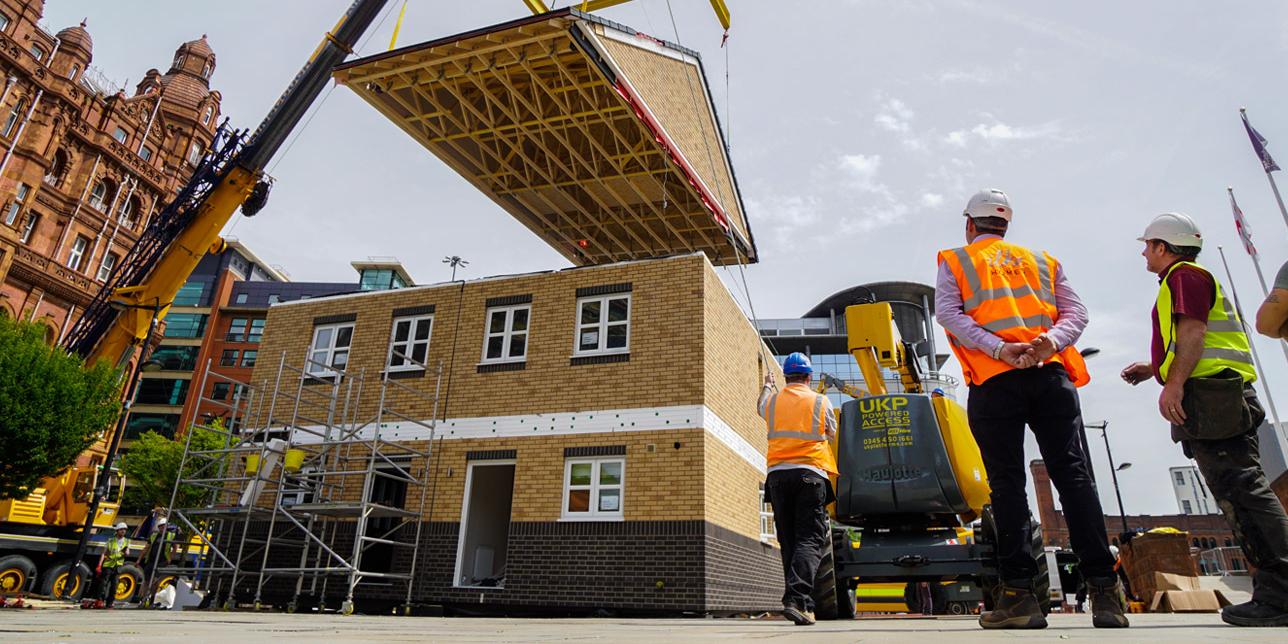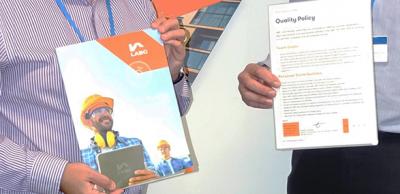Tackling the housing crisis with prefab homes
With increasing pressure to build new homes throughout England, a Yorkshire factory has begun production of fully-fitted three bedroom homes with a low starting price of only £65,000.
Currently, the factory can produce eight houses a day, ready to be loaded onto lorries and delivered across the country.
While the length of time it takes to build a traditional house is 40 weeks, making prefab homes is much quicker at around 10 days in total.
Ilke Homes have said they’ll be able to produce 2,000 homes a year, eventually rising to 5,000, putting it into the top echelon of volume house builders in the country.
The Housing Secretary, James Brokenshire, speaking at the opening of the Knaresborough site on Thursday, said the factory would help the government reach an annual target of 300,000 new homes in England. Last year nearly 220,000 homes were built.
"This is about challenging the ways we have done things in the past. We want to see 300,000 homes being delivered by the mid-2020s, so we need to scale up and build more, better and faster. And that is precisely what this facility is about," he said.
Once constructed, the houses are transported on low-loader lorries throughout the night and, despite a record 36 hours for assembling one of their houses, the average build time will be one to two weeks.
The homes are bolted together on site and come with a fully fitted kitchen and bathroom with plumbing and electrics included.
The low price tag of £65,000 - £75,000 is likely to double or triple once the cost of land, on-site assembly and connecting the home to services is accounted for.
Quality homes of the future?
The term prefab is often associated with low quality and post-war emergency housing. However, Ilke are promising homes built to a higher standard with lower energy bills than houses built the traditional way.
Alongside Ilke, L&G have recently opened a factory in Yorkshire to produce prefab homes. Rosie Toogood, of L&G Modular, said the company aimed to completely disrupt the existing model for building homes.
"We are building a new industry here, designing in different ways and redefining the housebuilding process. We are changing the supply line, and building at a pace never seen before."
Please Note: Every care was taken to ensure the information was correct at the time of publication. Any written guidance provided does not replace the user’s professional judgement. It is the responsibility of the dutyholder or person carrying out the work to ensure compliance with relevant building regulations or applicable technical standards.
Sign up to the building bulletin newsletter
Over 48,000 construction professionals have already signed up for the LABC Building Bulletin.
Join them and receive useful tips, practical technical information and industry news by email once every 6 weeks.
Subscribe to the Building Bulletin




Comments
Prefab Homes
Submitted 6 years 2 months ago
Prefab Homes
Submitted 6 years 2 months ago
Prefab homes
Submitted 6 years 2 months ago
In the 1970's?, the BRE conducted a survey of the various methods of construction, and many were found - for various reasons, to be "defective" forms of construction, providing properties, which had issues with corrosion, water ingress, structural failures / issues etc. In the 1980's, timber frame went through a similar phase, - however, a recent report suggested that only a small percentage of those timber framed properties identified in that report suffered from failure issues.
I can see a similar situation arising with some of the forms of construction being promoted today, where properties / construction methods will give us properties with a shorter life span, increased maintenance problems, and failures due to "mass production". Time wise - MMC units are potentially quicker, but is reliant on repetition from suppliers to achieve the turnover of units per day / week as this article.
Cost wise - Would appear to be equal to traditional construction, but from current experience, traditionally constructed properties will have a longer life span in the region of 60 years, rather than 25 years?
Add new comment